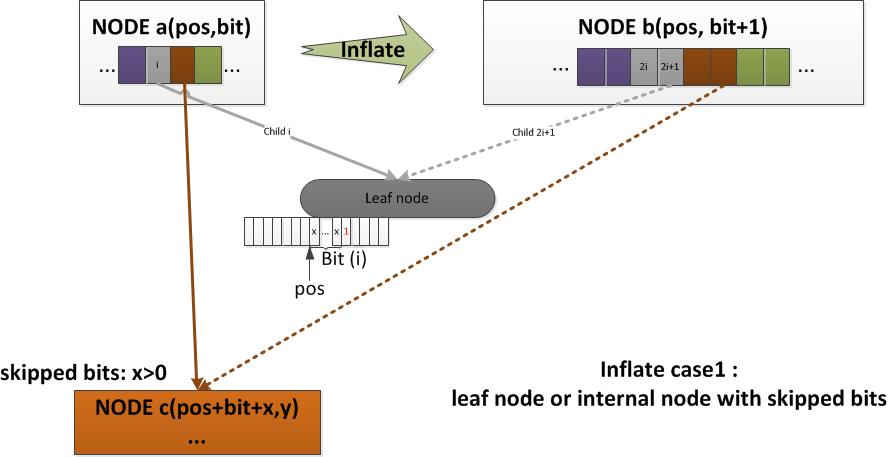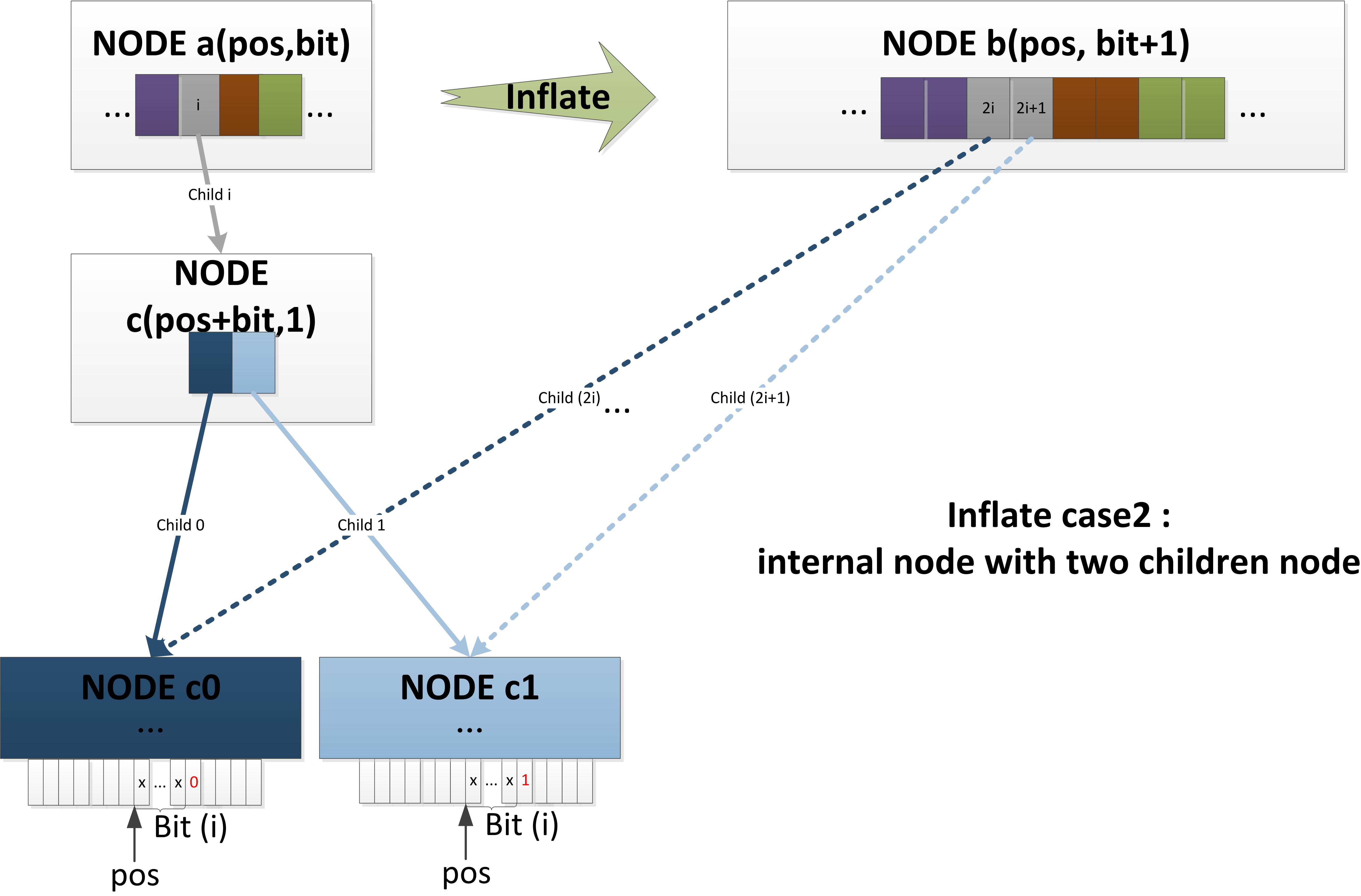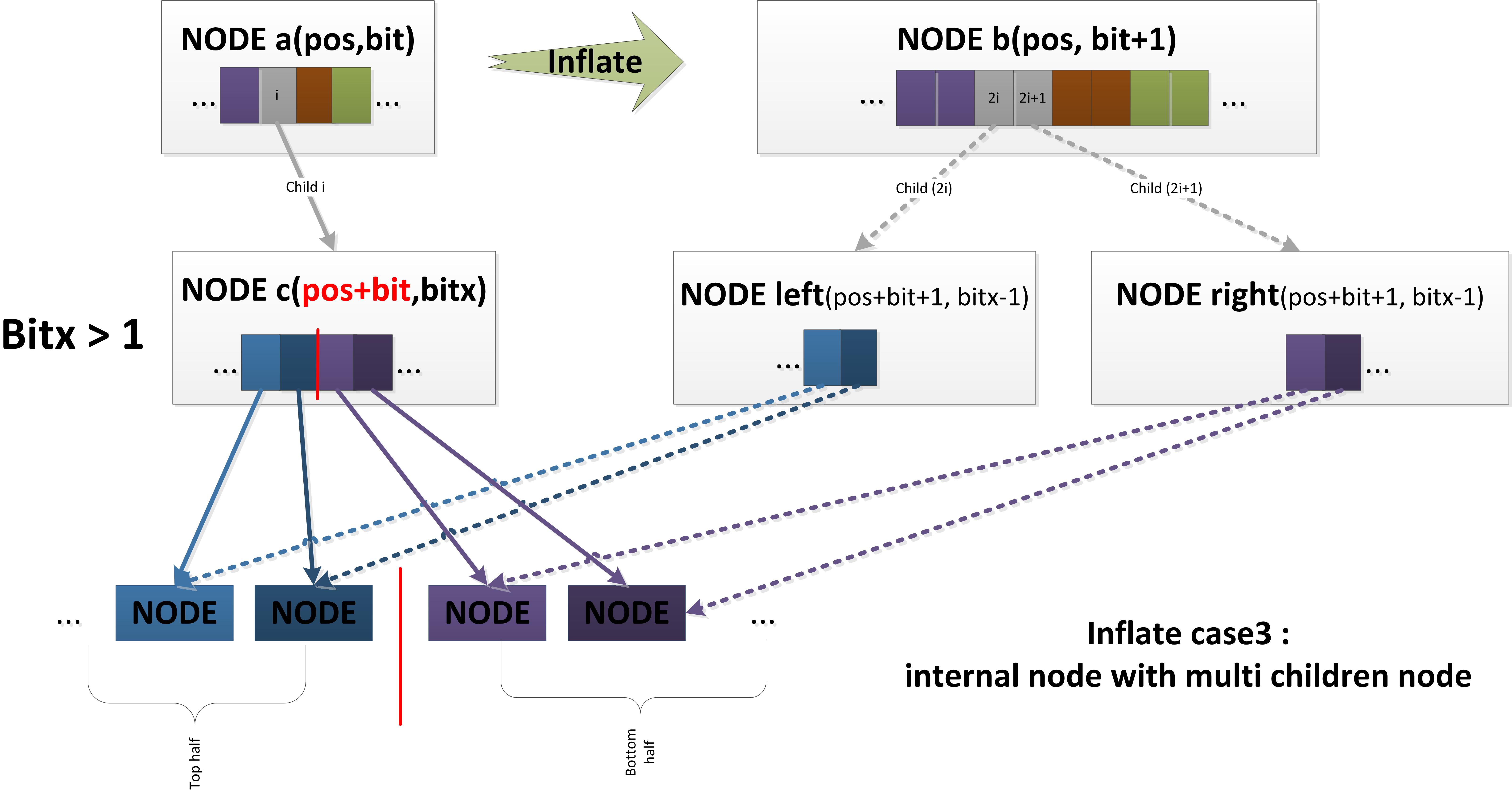1
2
3
4
5
6
7
8
9
10
11
12
13
14
15
16
17
18
19
20
21
22
23
24
25
26
27
28
29
30
31
32
33
34
35
36
37
38
39
40
41
42
43
44
45
46
47
48
49
50
51
52
53
54
55
56
57
58
59
60
61
62
63
64
65
66
67
68
69
70
71
72
73
74
75
76
77
78
79
80
81
82
83
84
85
86
87
88
89
90
91
92
93
94
95
96
97
98
99
100
101
102
103
104
105
106
107
108
109
110
111
112
113
114
115
116
117
118
119
120
121
122
123
124
125
126
127
128
129
| 702 static struct tnode *inflate(struct trie *t, struct tnode *tn)
703 {
704 struct tnode *oldtnode = tn;
705 int olen = tnode_child_length(tn);
706 int i;
707
708 pr_debug("In inflate\n");
709
710 tn = tnode_new(oldtnode->key, oldtnode->pos, oldtnode->bits + 1);
711
712 if (!tn)
713 return ERR_PTR(-ENOMEM);
714
715
721
722 for (i = 0; i < olen; i++) {
723 struct tnode *inode;
724
725 inode = (struct tnode *) tnode_get_child(oldtnode, i);
726 if (inode &&
727 IS_TNODE(inode) &&
728 inode->pos == oldtnode->pos + oldtnode->bits &&
729 inode->bits > 1) {
730 struct tnode *left, *right;
731 t_key m = ~0U << (KEYLENGTH - 1) >> inode->pos;
732
733 left = tnode_new(inode->key&(~m), inode->pos + 1,
734 inode->bits - 1);
735 if (!left)
736 goto nomem;
737
738 right = tnode_new(inode->key|m, inode->pos + 1,
739 inode->bits - 1);
740
741 if (!right) {
742 tnode_free(left);
743 goto nomem;
744 }
745
746 put_child(tn, 2*i, (struct rt_trie_node *) left);
747 put_child(tn, 2*i+1, (struct rt_trie_node *) right);
748 }
749 }
750
751 for (i = 0; i < olen; i++) {
752 struct tnode *inode;
753 struct rt_trie_node *node = tnode_get_child(oldtnode, i);
754 struct tnode *left, *right;
755 int size, j;
756
757
758 if (node == NULL)
759 continue;
760
761
762
763 if (IS_LEAF(node) || ((struct tnode *) node)->pos >
764 tn->pos + tn->bits - 1) {
765 put_child(tn,
766 tkey_extract_bits(node->key, oldtnode->pos, oldtnode->bits + 1),
767 node);
768 continue;
769 }
770
771
772 inode = (struct tnode *) node;
773
774 if (inode->bits == 1) {
775 put_child(tn, 2*i, rtnl_dereference(inode->child[0]));
776 put_child(tn, 2*i+1, rtnl_dereference(inode->child[1]));
777
778 tnode_free_safe(inode);
779 continue;
780 }
781
782
783
784
800
801
804
805 left = (struct tnode *) tnode_get_child(tn, 2*i);
806 put_child(tn, 2*i, NULL);
807
808 BUG_ON(!left);
809
810 right = (struct tnode *) tnode_get_child(tn, 2*i+1);
811 put_child(tn, 2*i+1, NULL);
812
813 BUG_ON(!right);
814
815 size = tnode_child_length(left);
816 for (j = 0; j < size; j++) {
817 put_child(left, j, rtnl_dereference(inode->child[j]));
818 put_child(right, j, rtnl_dereference(inode->child[j + size]));
819 }
820 put_child(tn, 2*i, resize(t, left));
821 put_child(tn, 2*i+1, resize(t, right));
822
823 tnode_free_safe(inode);
824 }
825 tnode_free_safe(oldtnode);
826 return tn;
827 nomem:
828 tnode_clean_free(tn);
829 return ERR_PTR(-ENOMEM);
830 }
|


